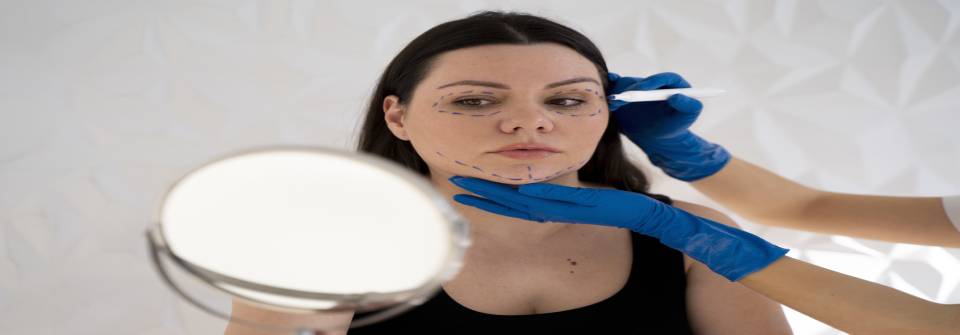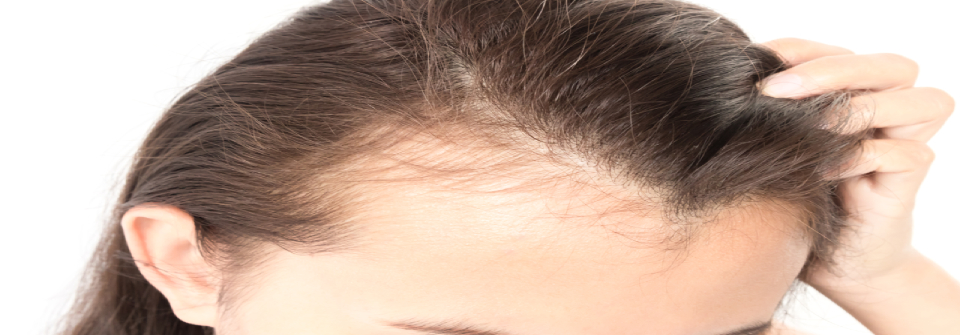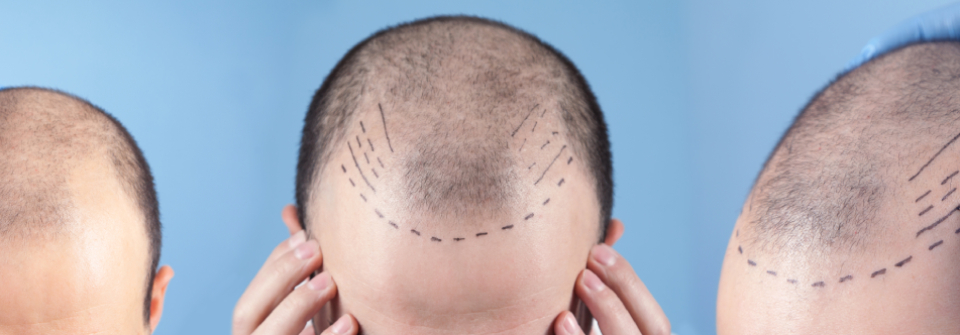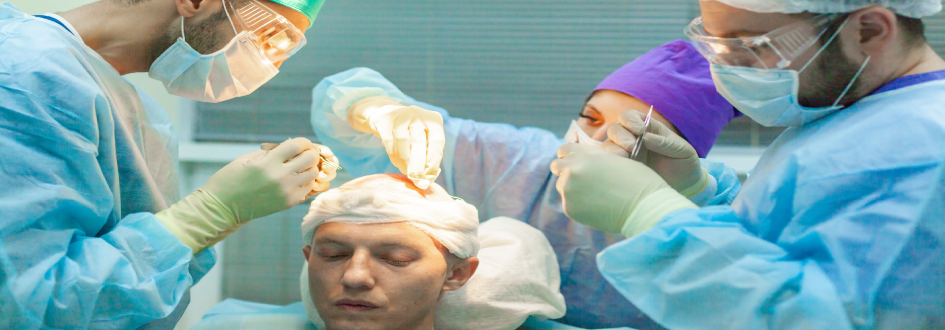
Restoring Confidence: Hair Transplant Clinic for Hair Growth
Introduction to Hair Transplantation:
Hair loss can have a profound effect on an individual's self-confidence and overall sense of well-being. Fortunately, there is hope in the form of hair transplantation, which has become an increasingly sought-after solution offered by reputable clinics like LivGlam Aesthetic Clinic. To restore natural hair growth treatment and reclaim a youthful appearance, this innovative procedure has gained popularity. In this blog post, we will embark on an exploration of the world of hair transplantation, delving into the various techniques, advancements, and important considerations. Our goal is to empower individuals seeking this life-changing procedure to make informed decisions. Join us as we navigate the transformative possibilities offered by Livglam Aesthetic Clinic and the remarkable field of hair transplantation.
Restoring Confidence: The Transformative Power of Hair Transplantation
To fully grasp the value of hair transplantation and the role it plays as an effective hair loss treatment, it is crucial to gain a comprehensive understanding of the causes and various types of hair loss. Explore the common factors that contribute to hair loss, including genetics, hormonal changes, and underlying medical conditions. Delve into the world of pattern baldness, receding hairlines, and thinning hair to comprehend the challenges faced by individuals seeking the best hair loss treatment. In this journey of discovery, Livglam Aesthetic Clinic stands out as a trusted destination offering cutting-edge solutions for hair loss treatment. Join us as we unravel the intricacies of hair loss and explore the transformative possibilities provided by the exceptional services at LivGlam Aesthetic Clinic.
Hair Transplantation Techniques: From Extraction to Implantation
Over the years, two primary techniques have emerged as popular methods for hair transplantation: follicular unit transplantation (FUT) and follicular unit extraction (FUE). Each technique has its own advantages and specific processes involved in achieving natural-looking results.
Follicular Unit Transplantation (FUT):
Follicular Unit Transplantation, also known as strip harvesting, is a traditional hair transplantation technique. Here's how the process typically works:
a. Donor Area Preparation: The surgeon identifies a suitable donor area, usually the back or the lateral areas of the scalp near the ears, where hair follicles are genetically resistant to balding. The area is trimmed and sterilized.
b. Donor Strip Removal: A strip of tissue containing hair follicles is surgically removed from the donor area. The incision is carefully closed using sutures or staples, leaving a linear scar that can be covered by surrounding hair.
c. Follicular Unit Dissection: The donor strip is dissected under a microscope into individual follicular units, which consist of one to four hairs each. These follicular units are carefully separated and preserved.
d. Recipient Area Preparation: The recipient area, where the hair will be implanted, is cleaned and numbed with local anesthesia.
e. Graft Placement: The surgeon creates tiny incisions in the recipient area, and the dissected follicular units are inserted into these incisions using specialized instruments. The angle, depth, and distribution of the grafts are crucial to achieving natural hair growth patterns.
Advantages of FUT Hair transplantation technique:
Suitable for patients requiring a large number of grafts.
Allows the surgeon to harvest a greater number of follicular units in a single session.
Provides higher hair yield as more grafts can be extracted from the donor strip.
Follicular Unit Extraction (FUE):
Follicular Unit Extraction is a more advanced and minimally invasive hair transplantation technique. It involves the following steps:
a. Donor Area Shaving: The donor area is typically shaved to allow better visibility and access to individual hair follicles.
b. Individual Follicular Unit Extraction: Using a micro-punch or a specialized device, the surgeon extracts individual follicular units directly from the donor area. This process leaves small, circular scars that are less noticeable than the linear scar from FUT.
c. Recipient Area Preparation: Similar to FUT, the recipient area is cleaned and numbed with local anesthesia.
d. Graft Placement: The surgeon creates tiny incisions in the recipient area and implants the extracted follicular units into these incisions. The precision and placement of the grafts are essential for natural-looking results.
Advantages of FUE Hair transplantation technique:
Minimally invasive with no linear scar, making it ideal for those who prefer to keep their hair short.
Allows for more flexibility in donor area selection, including body hair transplantation.
Faster recovery time and less discomfort compared to FUT.
In both techniques, the transplanted hair follicles typically go through a resting phase before entering a growth phase, resulting in new hair growth within a few months after the procedure. The final results are usually noticeable within 6 to 12 months, providing a natural-looking hairline and improved hair density.
Finding the Perfect Fit: Selecting a Skilled Hair Transplant Surgeon
Selecting a skilled and experienced hair transplant surgeon is crucial for a successful outcome. Explore factors to consider when choosing a surgeon, including qualifications, experience, patient testimonials, and before-and-after photos. Understanding the surgeon's expertise can help instill confidence and ensure a positive experience.
Innovative Technologies and Advancements: Revolutionising Hair Transplantation
Stay up to date with the latest advancements in hair transplantation technology. Explore innovative techniques, such as robotic hair transplantation, laser-assisted procedures, and platelet-rich plasma (PRP) therapy. Learn how these advancements enhance the precision, efficiency, and overall success of hair transplantation procedures.
Managing Expectations:
Hair transplantation is a transformative procedure, but it is essential to set realistic expectations. Discuss the timeline of hair growth, the gradual nature of results, and potential post-transplant care requirements. Managing expectations effectively ensures individuals are prepared for the journey ahead.
Hair Transplantation: Pre and Post- Transplant Care and Considerations
Learn about essential pre-transplant care to optimize the success of the procedure. Explore tips for maintaining a healthy scalp, managing existing hair, and discussing any concerns with the surgeon. Additionally, understand the post-transplant care regimen, including instructions for washing, styling, and protecting the newly transplanted hair.
Lifestyle Factors and Hair Health:
Understand the influence of lifestyle factors on hair health. Explore the importance of a balanced diet, proper hair care practices, stress management, and avoiding damaging habits. Maintaining overall hair health can complement the results of a hair transplantation procedure.
Hair Transplantation for Women:
While hair loss is commonly associated with men, women also experience hair thinning, dandruff, nd baldness. Explore the unique considerations, causes, and treatment options for female hair loss, including hair transplantation. Discuss how the procedure can restore confidence and rejuvenate the appearance of women facing hair loss.
Conclusion: Regaining Confidence Through Hair Transplantation
Hair transplantation offers hope and a chance to regain a long-lasting natural look, a fuller head of hair. By understanding the techniques, advancements, and considerations associated with hair transplant treatment, individuals can make informed decisions and embark on a transformative journey. Whether it's to address pattern baldness, receding hairlines, or thinning hair, hair transplantation can provide a long-lasting solution and help restore confidence, allowing individuals to embrace life with a renewed sense of self-assurance.



















